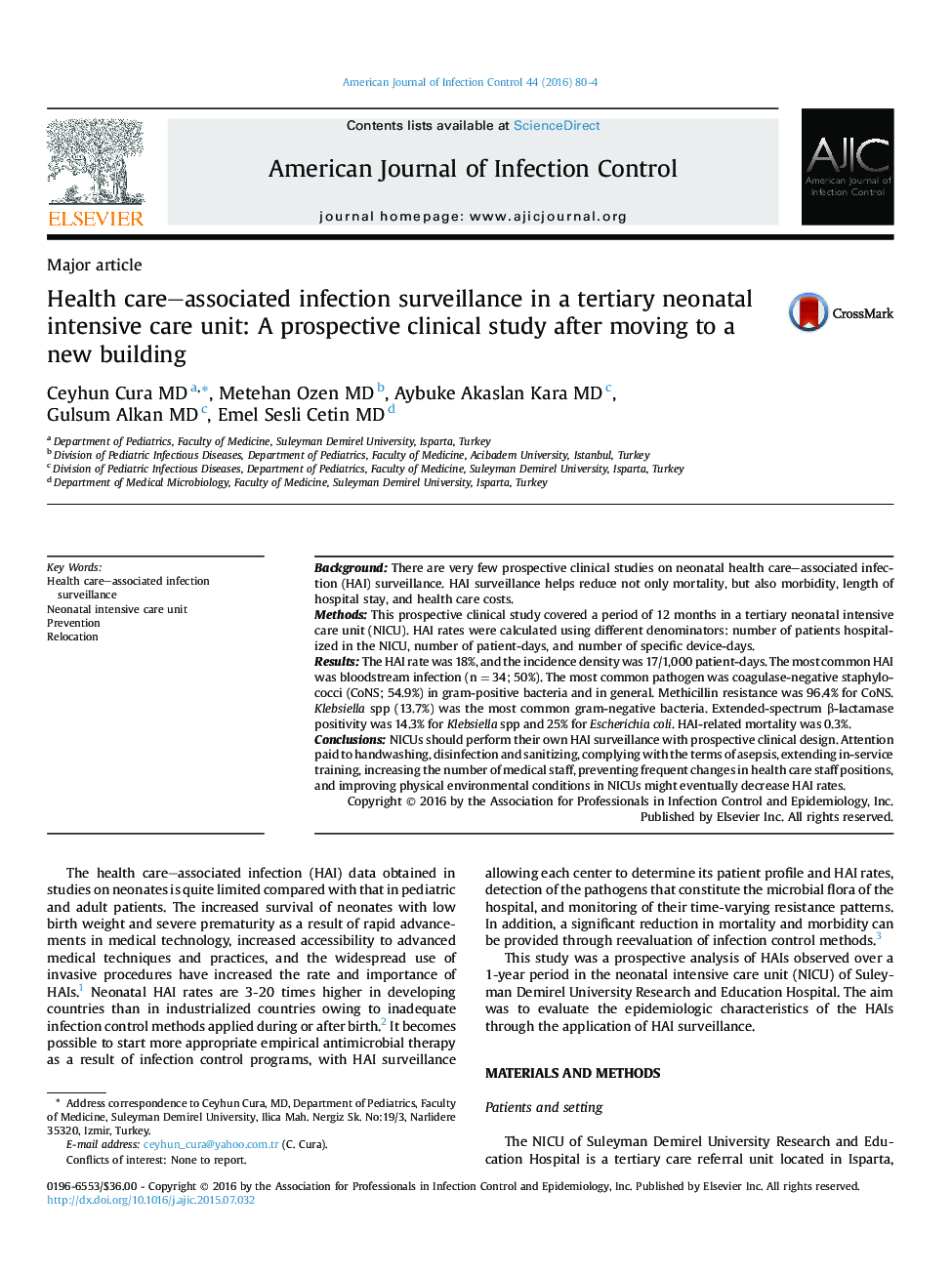| کد مقاله | کد نشریه | سال انتشار | مقاله انگلیسی | نسخه تمام متن |
|---|---|---|---|---|
| 2638251 | 1563464 | 2016 | 5 صفحه PDF | دانلود رایگان |
• We evaluated both culture-positive infections and culture-negative infections.
• We aimed to analyze the epidemiologic characteristics of the HAIs.
• Improving physical environmental conditions will decrease HAI rates.
BackgroundThere are very few prospective clinical studies on neonatal health care–associated infection (HAI) surveillance. HAI surveillance helps reduce not only mortality, but also morbidity, length of hospital stay, and health care costs.MethodsThis prospective clinical study covered a period of 12 months in a tertiary neonatal intensive care unit (NICU). HAI rates were calculated using different denominators: number of patients hospitalized in the NICU, number of patient-days, and number of specific device-days.ResultsThe HAI rate was 18%, and the incidence density was 17/1,000 patient-days. The most common HAI was bloodstream infection (n = 34; 50%). The most common pathogen was coagulase-negative staphylococci (CoNS; 54.9%) in gram-positive bacteria and in general. Methicillin resistance was 96.4% for CoNS. Klebsiella spp (13.7%) was the most common gram-negative bacteria. Extended-spectrum β-lactamase positivity was 14.3% for Klebsiella spp and 25% for Escherichia coli. HAI-related mortality was 0.3%.ConclusionsNICUs should perform their own HAI surveillance with prospective clinical design. Attention paid to handwashing, disinfection and sanitizing, complying with the terms of asepsis, extending in-service training, increasing the number of medical staff, preventing frequent changes in health care staff positions, and improving physical environmental conditions in NICUs might eventually decrease HAI rates.
Journal: American Journal of Infection Control - Volume 44, Issue 1, 1 January 2016, Pages 80–84
